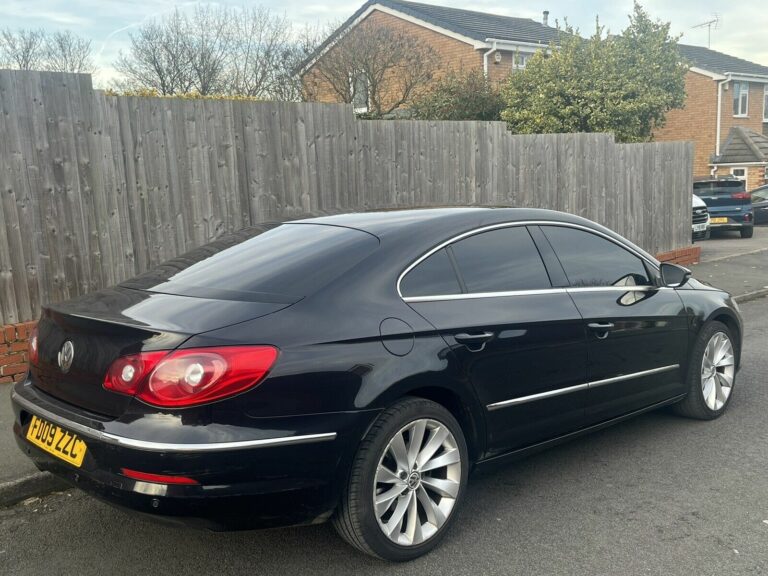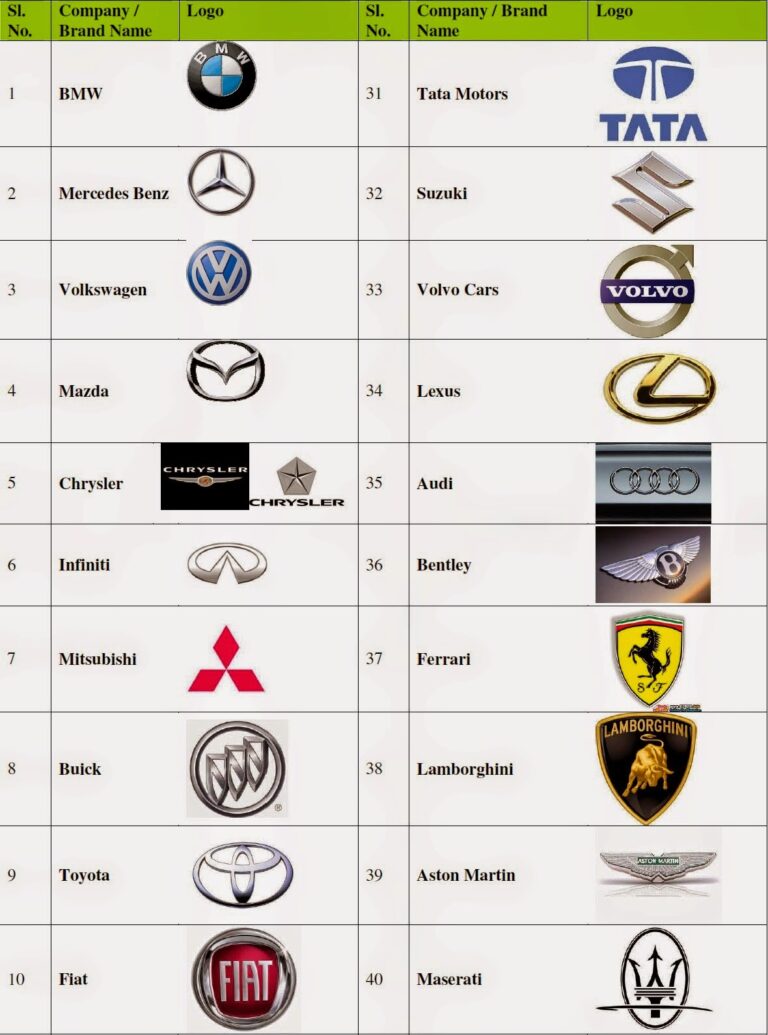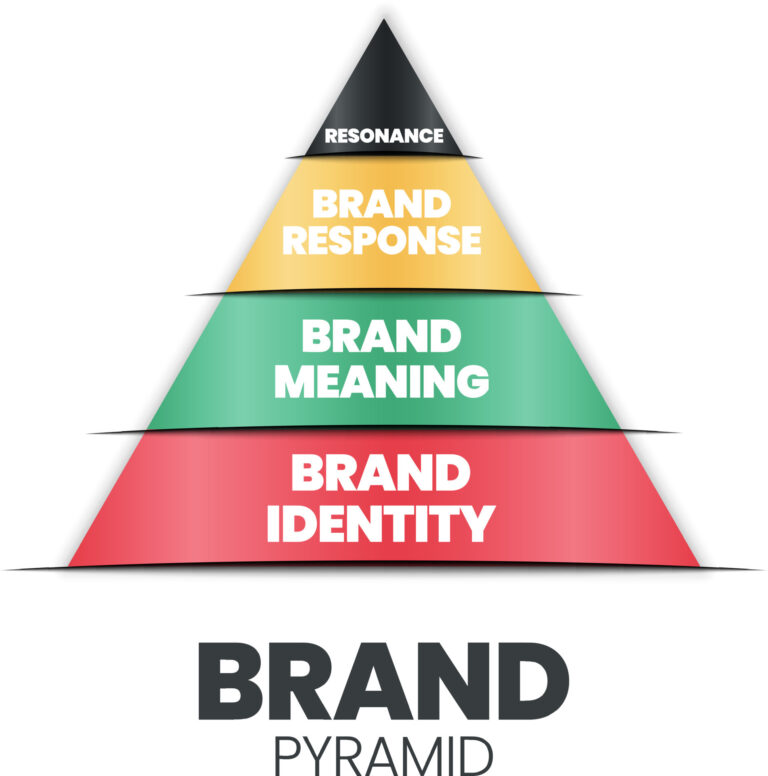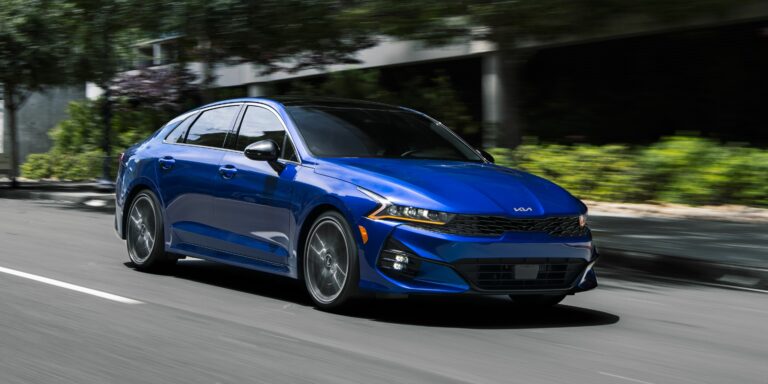Decoding Fiat’s Empire: A Deep Dive into Controlled Car Brands
Decoding Fiat’s Empire: A Deep Dive into Controlled Car Brands cars.truckstrend.com
Introduction: The Evolution of an Automotive Colossus
When one hears "Car Brand Controlled By Fiat," the immediate image might be of a single, specific marque. However, the reality is far more complex and fascinating. Fiat, or Fabbrica Italiana Automobili Torino, has never been just a single car brand; it has been, for over a century, a dynamic and acquisitive force in the global automotive industry. From its humble beginnings in Turin, Italy, Fiat systematically expanded its influence, bringing numerous iconic and diverse car brands under its wing. This strategic control wasn’t merely about owning more brands; it was a deliberate strategy to achieve economies of scale, access new markets, leverage diverse engineering talents, and, at times, rescue struggling automotive legends.
Decoding Fiat’s Empire: A Deep Dive into Controlled Car Brands
This article will delve deep into the rich history of car brands that have fallen under Fiat’s sphere of influence, tracing their journey from independent entities to integrated components of a sprawling automotive empire. We will explore the motivations behind these acquisitions, the operational dynamics of managing a multi-brand portfolio, the benefits and challenges inherent in such control, and ultimately, how this legacy has culminated in the formation of Stellantis, one of the world’s largest automotive conglomerates today. Understanding "Car Brand Controlled By Fiat" means appreciating a century of strategic mergers, ambitious revivals, and the relentless pursuit of global automotive leadership.
The Genesis of an Empire: Fiat’s Early Acquisitions and Italian Icons
Fiat’s journey into multi-brand ownership began relatively early in its history, driven by a desire to consolidate the Italian automotive market and diversify its product offerings. These early acquisitions were pivotal in shaping Fiat’s identity as a national champion and laying the groundwork for its future global ambitions.
Key Brands and Motivations:
- Lancia (Acquired 1969): Lancia, known for its innovative engineering, luxurious designs, and rallying prowess, faced financial difficulties despite its technical brilliance. Fiat’s acquisition aimed to preserve a national treasure and integrate Lancia’s advanced technologies and prestigious image into its portfolio. The goal was to position Lancia as a more upscale, technologically sophisticated alternative to mainstream Fiat models.
- Alfa Romeo (Acquired 1986): Another jewel of Italian automotive heritage, Alfa Romeo, with its sporting pedigree and passionate fan base, also succumbed to financial woes. Fiat stepped in, largely at the behest of the Italian government, to prevent a foreign takeover (Ford was a suitor). The objective was to revitalize Alfa Romeo, leveraging its performance image and design flair to compete in the premium sports sedan segment globally.
- Ferrari (Controlling Stake since 1969, Spun Off 2016): While Ferrari often operated with significant autonomy, Fiat acquired a 50% stake in 1969, later increasing it. This was a strategic alliance more than a typical acquisition, allowing Ferrari access to Fiat’s industrial resources while maintaining its exclusive identity. Ferrari remained a highly profitable, halo brand under Fiat’s control until its successful spin-off into a separate public entity in 2016, though the Agnelli family (Fiat’s founding family) retained significant influence.
- Maserati (Acquired 1993, moved under Ferrari management 1997, back under Fiat control 2005): Maserati, another Italian luxury and sports car manufacturer, had a tumultuous history before coming under Fiat’s direct control. Fiat’s repeated efforts aimed to bring stability and a clear direction to the brand, positioning it as a direct competitor to German luxury performance brands.
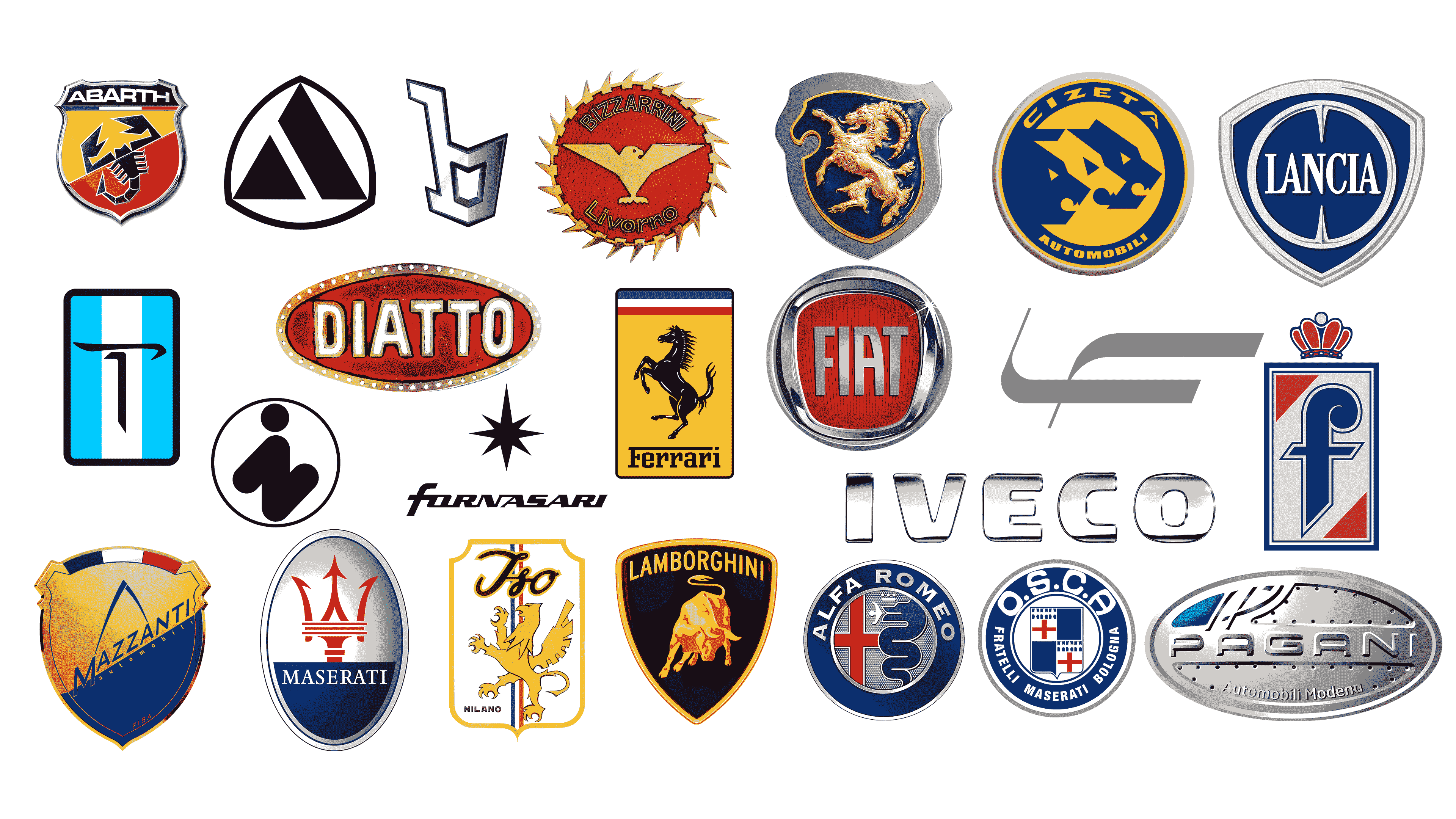
Operational Dynamics: In these early stages, Fiat often allowed a degree of brand independence, particularly for prestigious marques like Ferrari and Alfa Romeo, to preserve their unique identities. However, integration increased over time, particularly in platform sharing and componentry, to achieve cost efficiencies. The challenge was always to balance corporate synergy with maintaining the distinct "soul" of each brand.
The Transatlantic Leap: The Chrysler Merger and the Birth of FCA
The most transformative period for Fiat’s brand portfolio came with its audacious acquisition of Chrysler Group LLC in the wake of the 2008 financial crisis. This move, orchestrated by the visionary CEO Sergio Marchionne, fundamentally reshaped Fiat into a truly global automotive player and led to the formation of Fiat Chrysler Automobiles (FCA).

Key Brands Gained (from Chrysler Group):
- Chrysler: The historic American brand, positioned for mainstream and family-oriented vehicles.
- Dodge: Known for its performance vehicles, muscle cars, and trucks.
- Jeep: A global powerhouse in SUVs and off-road vehicles, with immense brand recognition.
- Ram: A dedicated truck brand, split from Dodge, to focus solely on pickups and commercial vehicles.

Motivations and Impact: Fiat acquired an initial 20% stake in Chrysler in 2009 as part of a government-led bailout, eventually gaining full control. The motivation was clear: gain immediate access to the lucrative North American market, leverage Chrysler’s robust truck and SUV platforms (especially Jeep), and achieve critical mass for global competition. In return, Chrysler benefited from Fiat’s small-car expertise and access to new, fuel-efficient engine technologies.
Operational Synergies and Challenges: The merger led to significant platform sharing (e.g., Fiat’s C-platform for the Dodge Dart and Chrysler 200, Jeep Renegade/Fiat 500X on a shared small-wide platform), engine integration (e.g., Pentastar V6 in many FCA vehicles), and shared manufacturing processes. Marchionne’s relentless focus on efficiency and global integration was key. Challenges included integrating two distinct corporate cultures, managing legacy quality issues from both sides, and ensuring brand differentiation within the new, much larger portfolio. Jeep, in particular, flourished under FCA, becoming a global growth engine.
The Dawn of a New Era: From FCA to Stellantis
The evolution of Fiat’s controlled brands didn’t stop with FCA. In 2021, FCA merged with the French PSA Group (which included brands like Peugeot, Citroën, Opel/Vauxhall, and DS Automobiles) to form Stellantis. This mega-merger created the world’s fourth-largest automotive group by volume, bringing an unprecedented number of brands under one corporate umbrella.
Current Portfolio (under Stellantis, including former Fiat-controlled brands):
- Italian Heritage: Fiat, Alfa Romeo, Lancia, Maserati, Abarth
- American Muscle: Chrysler, Dodge, Jeep, Ram
- European Powerhouses (from PSA): Peugeot, Citroën, DS Automobiles, Opel/Vauxhall
- Mobility Solutions: Free2move, Leasys
Benefits of Stellantis: The formation of Stellantis represents the ultimate culmination of Fiat’s strategy of brand control. The benefits are immense:
- Unrivaled Scale: Over 14 distinct automotive brands sharing platforms, R&D, and purchasing power.
- Global Diversification: Strong presence in Europe, North America, and emerging markets.
- Electrification Acceleration: Shared investment in EV platforms, battery technology, and software development.
- Cost Synergies: Billions in anticipated savings through shared resources and optimized operations.
Future Directions: Under Stellantis, the focus is on leveraging these synergies while preserving the unique identity and heritage of each brand. The challenge is immense: how to make a Fiat 500, a Jeep Wrangler, a Peugeot 308, and a Maserati Ghibli coexist and thrive under one roof, all while navigating the transition to electric vehicles and new mobility solutions.
The Dynamics of Control: Managing a Multi-Brand Portfolio
Successfully managing a diverse portfolio of car brands requires a delicate balance of centralized control and brand autonomy. Fiat, FCA, and now Stellantis, have employed various strategies:
- Platform Sharing: This is perhaps the most significant aspect of multi-brand control. Developing a single "architecture" that can underpin multiple vehicles across different brands (e.g., compact cars, SUVs, sedans) drastically reduces R&D and manufacturing costs.
- Benefits: Economies of scale, faster development cycles, shared safety features.
- Challenges: Risk of "badge engineering" where vehicles lose their distinct identity, leading to brand dilution. Consumers might perceive less value if they know a premium car shares its core with a budget model.
- Powertrain Integration: Sharing engines and transmissions across brands is another major cost-saving measure. While specific tuning varies, the core components are often identical.
- Component Commonality: From infotainment systems to switchgear and wiring harnesses, common components are used wherever possible.
- Design Language vs. Corporate Identity: Each brand maintains its distinct design philosophy, but there’s an underlying corporate influence, especially in areas like interior ergonomics or technology integration. The goal is to avoid making an Alfa Romeo look like a Fiat, while still benefiting from shared resources.
- Market Positioning and Differentiation: Careful market segmentation is crucial. For instance, within Stellantis, Jeep is the off-road/SUV specialist, Ram is trucks, Dodge is performance, Fiat is urban/small cars, Alfa Romeo and Maserati are luxury/performance, and Peugeot/Citroën cover mainstream European segments.
- Brand Revitalization Strategies: Fiat has a track record of attempting to revive dormant or struggling brands (e.g., Alfa Romeo, Lancia). This involves significant investment in new models, marketing, and often, a strategic pivot in market focus. Success has been mixed, with Jeep being a standout success story.
Benefits and Implications for Consumers and the Industry
The intricate web of car brands controlled by Fiat (and its successors) has profound implications for both consumers and the broader automotive industry.
For Consumers:
- Wider Choice: Consumers benefit from a vast array of vehicles, from small city cars to rugged SUVs and luxury sports cars, all potentially leveraging shared, high-quality technologies.
- Access to Technology: Innovations developed by one brand (e.g., advanced driver-assistance systems, infotainment) can be quickly disseminated across the group.
- Potential for Value: Economies of scale can sometimes translate to more competitive pricing or better feature sets for the money.
- Brand Preservation: Without Fiat’s intervention, some iconic brands like Alfa Romeo or Lancia might not have survived.
For the Industry:
- Increased Consolidation: The formation of mega-groups like Stellantis signifies a trend towards fewer, larger players dominating the global automotive landscape.
- Resource Pooling: Massive R&D budgets for electrification and autonomous driving are more manageable for large conglomerates.
- Intensified Competition: While fewer players exist, the internal competition within groups for resources and market share can be fierce, and external competition from other large groups (VW, Toyota, GM) remains intense.
- Global Reach: These groups can better withstand regional economic downturns and leverage opportunities in diverse markets worldwide.
Practical Advice and Actionable Insights
For those seeking to understand or engage with the brands historically controlled by Fiat:
- Research Beyond the Badge: When considering a vehicle from any of these brands, understand that many core components (platforms, engines, transmissions, electronics) might be shared across the group. This isn’t necessarily a negative; it often means proven technology and economies of scale.
- Focus on Brand Identity: While sharing technology, each brand within the Stellantis portfolio aims to retain its unique character, driving dynamics, and design philosophy. Choose a brand that resonates with your personal preferences and needs.
- Evaluate Dealer Networks: A strong dealer network and after-sales service are crucial. While brands are part of a larger group, individual dealer quality can vary.
- Consider Future Trends: Stellantis is heavily investing in electrification. If you’re planning a long-term purchase, look into the brand’s EV roadmap and how it aligns with the group’s overall strategy.
- For Investors/Industry Watchers: Pay close attention to Stellantis’s strategic announcements regarding platform rationalization, electrification targets, and how it plans to differentiate and grow each of its 14+ brands in an increasingly competitive and evolving market. The success of brand management within such a large group is a key indicator of its overall health.
Concluding Summary: A Legacy of Strategic Expansion
The story of "Car Brand Controlled By Fiat" is a testament to the dynamic and often tumultuous nature of the automotive industry. From its origins as a single Italian manufacturer, Fiat strategically acquired and integrated numerous brands, building a portfolio that spanned luxury, performance, mainstream, and utility segments. This relentless pursuit of scale, market access, and technological synergy culminated in the creation of FCA, and subsequently, Stellantis.
Today, the legacy of Fiat’s control is embodied in Stellantis, a global automotive giant with an unparalleled breadth of brands. The journey has been marked by both triumphs and challenges, demonstrating the complex art of balancing corporate efficiency with the unique identity and heritage of each beloved marque. As the industry shifts towards electrification and new mobility solutions, the ability of Stellantis to effectively manage and differentiate its vast brand empire will be crucial to its continued success, ensuring that the spirit and legacy of each brand, nurtured over decades, continue to thrive into the future.
Key Brands Under Fiat/FCA/Stellantis Influence: A Portfolio Overview
This table provides an overview of key automotive brands that have been, or are currently, under the influence of Fiat, FCA, or the current Stellantis conglomerate. It focuses on their period of influence and market positioning, rather than specific model prices, which are highly variable.
| Brand Name | Period of Fiat/FCA/Stellantis Influence (approx.) | Original Country | Key Characteristics/Market Focus | Current Status (within Stellantis) |
|---|---|---|---|---|
| Fiat | Founder (core brand) | Italy | Urban mobility, small cars, mainstream passenger vehicles; historically diverse range. | Core mainstream brand |
| Lancia | 1969 – Present | Italy | Historically innovative, luxury, rallying. Currently focused on premium-compact segment for select European markets. | Niche premium brand, revitalizing |
| Alfa Romeo | 1986 – Present | Italy | Sporty, performance-oriented, premium sedans & SUVs; emotional design. | Premium performance brand |
| Ferrari | 1969 – 2016 (controlling stake) | Italy | Ultra-luxury sports cars, high-performance vehicles; exclusive branding. | Independent (Agnelli family influence) |
| Maserati | 1993 – Present | Italy | Luxury, high-performance grand tourers, sedans & SUVs; Italian craftsmanship. | Luxury performance brand |
| Abarth | 1971 – Present (revived as brand 2007) | Italy | Performance tuning arm of Fiat, focusing on sporty versions of Fiat models. | Performance sub-brand of Fiat |
| Chrysler | 2009 – Present | USA | Mainstream family vehicles, minivans; historically broader range. | Mainstream American brand |
| Dodge | 2009 – Present | USA | Performance vehicles, muscle cars, SUVs; historically trucks and mainstream. | Performance American brand |
| Jeep | 2009 – Present | USA | SUVs, off-road vehicles; global leader in utility and adventure. | Global SUV & Off-road leader |
| Ram | 2009 – Present (split from Dodge) | USA | Pick-up trucks, commercial vans; heavy-duty and light-duty trucks. | Dedicated Truck brand |
Note on "Price Information": Providing a "price table" for a collection of car brands controlled by a conglomerate is not feasible or meaningful, as vehicle prices vary widely by model, trim, region, and year. The table above focuses on the strategic information about the brands themselves, which is the core of understanding "Car Brand Controlled By Fiat." Acquisition costs of these brands were complex financial transactions, often involving stock swaps and debt, rather than simple purchase prices.
Frequently Asked Questions (FAQ) about Car Brands Controlled by Fiat
Q1: Which car brands are currently controlled by Fiat?
A1: Strictly speaking, Fiat S.p.A. no longer exists as an independent entity controlling other brands. It merged with Chrysler to form Fiat Chrysler Automobiles (FCA), which then merged with PSA Group to form Stellantis in 2021. So, the brands historically controlled by Fiat (e.g., Fiat, Alfa Romeo, Lancia, Maserati, Abarth, Chrysler, Dodge, Jeep, Ram) are now all part of the Stellantis portfolio, alongside brands from the former PSA Group (e.g., Peugeot, Citroën, Opel/Vauxhall, DS).
Q2: Why did Fiat acquire so many car brands over the years?
A2: Fiat’s acquisitions were driven by several strategic motivations:
- Economies of Scale: To reduce costs by sharing platforms, engines, and components across multiple brands.
- Market Expansion: To gain access to new geographic markets (e.g., Chrysler for North America).
- Brand Diversification: To offer a wider range of products, from entry-level to luxury, and to cater to different customer segments.
- Technological Synergies: To integrate specialized engineering or design expertise from acquired brands.
- Brand Preservation: To rescue iconic Italian brands facing financial difficulties.
Q3: Does the Fiat brand still exist, or is it just part of Stellantis now?
A3: Yes, the Fiat brand absolutely still exists. It is one of the core brands within the Stellantis group, focusing primarily on urban mobility, small cars, and mainstream passenger vehicles, particularly strong in Europe and South America.
Q4: How has Fiat’s control impacted the identity and products of brands like Alfa Romeo or Jeep?
A4: The impact has been significant and varied:
- Shared Platforms & Powertrains: Many vehicles from different brands now share underlying architectures and engines, leading to cost efficiencies but also sometimes raising concerns about differentiation.
- Global Reach: Brands like Jeep and Alfa Romeo gained access to Fiat’s global distribution networks, significantly boosting their sales in new markets.
- Design & Engineering Influence: While brands strive to maintain their distinct design language, there’s often an underlying corporate influence in areas like interior design or technological features.
- Financial Stability: For brands like Alfa Romeo and Lancia, Fiat’s ownership provided crucial financial stability and investment for new model development, helping them survive.
Q5: What is the future for these brands under Stellantis?
A5: Under Stellantis, the future for these brands is largely focused on:
- Electrification: All brands are transitioning towards electric vehicle offerings, leveraging shared EV platforms and battery technology developed by Stellantis.
- Regional Focus: Stellantis is rationalizing product portfolios, with some brands focusing more intensely on specific regions (e.g., Lancia on Europe, Ram on North America).
- Synergy & Efficiency: Continued emphasis on cost reduction through shared R&D, manufacturing, and supply chains.
- Brand Revitalization: Stellantis has committed to investing in and revitalizing all 14+ brands, ensuring each has a distinct mission and market position.

